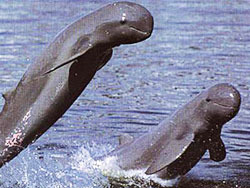Date: 9th August 2012
Venue: Intercontinental Hotel
Time: 1:00-8:00PM
Why Top Table Sell?
Tourism industry is growing gradually;
time is the disaster for business people. It would be hard for tourism
business buyer to meet with individual seller; it is time consuming and
costing. From time to time, there are more and more tourism businesses
growing in the industry. To save your time and cost, Top Table Sell can
bridge the gap for you; BUYERS and SELLERS will meet together at one
time for one main destination.
PATA Top Table Sell 2012 Seller Profiles
- Airline
- Hotel Chains/Independent hotels/resorts
- Restaurants
- Spa, handicraft and souvenir shops
- Tourism organization/Community Based Tourism/Ecotourism
- Transport sector
PATA Top Table Sell 2012 Buyer Profiles
- Well-known Tour Operators/Travel Agents in ASEAN Countries.
- Managing Director
- General Manager
- Sales executive
- Product Manager
- Senior staff from Tourism Organizations
- Community leaders
Seller and Buyer Registration Fees (US$ Net)
| Sellers | PATA Cambodia Chapter Member | Non-member |
| Airlines/Hotel/resort/restaurant/Spa/Transport/Tourism support businesses | $50 | $100 |
| Tourism organization/CBT/CBET/Handicraft/guide | $30 | $50 |
| Co-delegate | $20 | $30 |
| Buyers | PATA Cambodia Chapter Member | Non-member |
| Tour Operator/Travel Agent | $20 | $30 |
Inclusive for seller: open
to bring your business standing posters to display in the business
meeting hall, 15mn for business meeting with each buyer, tea &
coffee, networking dinner.
Payment:
Buyers and sellers are required to register in advance. The payment
needs to be done in advance via cash, checque at our office or bank
transfer with CIMB Bank. (Account Name: PATACC, Account No.
1-01-0122-00000015-0).
Contact information:
Ms. Sophea Sok (English/Khmer Speaking)
Secretary General
Tel: 023-555-2134
Mobile: 012-927-636
Email:
soksophea2009@gmail.com
|
Ms. Patile MINASSIAN (French/English Speaking)
Tel: 088-302-3510
Email:
patacambodia@gmail.com
Office: #147, St. 51(Pasteur), Sangkat Boeung Raing, Khan Doun Penh, Phnom Penh, Cambodia |
Tentative Program 9-August-2012
| Time | Topic/activities | Facilitator |
| 1:00-1:30PM | Open for registration | PATA team |
| 1:30-2:00PM | Visiting around for the displays by sellers and buyers within the hall | |
| 2:00-2:20PM |
Opening session
Welcome remark and introduce the objectives of the program by Chairman of PATA Cambodia Chapter
|
Mr. Thourn Sinan
Chairman
PATA Cambodia Chapter
|
| 2:20-6:00PM | Open for business appointment between BUYERS and SELLERS at the set tables | PATA Team |
| 6:00-8:00PM | Networking dinner | Together |
| 8:00PM | End of the event |





